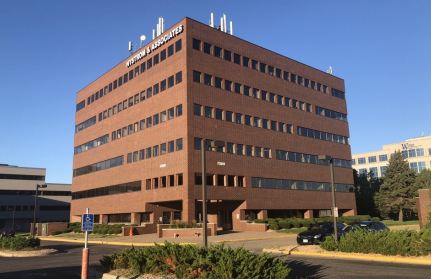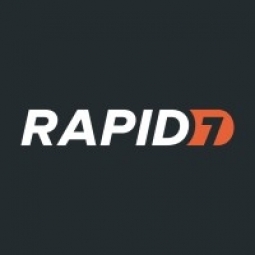Technology Category
- Cybersecurity & Privacy - Application Security
- Functional Applications - Manufacturing Execution Systems (MES)
Applicable Industries
- Cement
- Glass
Use Cases
- Additive Manufacturing
- Manufacturing Process Simulation
Services
- Cybersecurity Services
- Testing & Certification
About The Customer
Hypertherm is part of the Hypertherm Associates family, a 100% employee-owned company that provides industrial cutting technologies and solutions. The company's offerings include plasma, waterjet, software, and more, designed to help its customers succeed. Hypertherm operates in the manufacturing sector, providing solutions for a variety of applications, including shipyards, oil pipelines, and home hobbyists working on go-carts. The company prides itself on its consistency of purpose, drive to innovate, and passion for customer success, positioning it as a leader in the industrial cutting and shaping industry.
The Challenge
Hypertherm, a leading industrial cutting and shaping company, faced a significant challenge in maintaining the security and smooth operation of its diverse range of assets. These included operational technology, IoT devices, and Hypertherm's proprietary software. James Thompson, Information Security Manager at Hypertherm, was seeking a comprehensive solution that would provide visibility into the complex manufacturing sector, often referred to as the 'wild west' due to its lack of regulation. The company's environment was highly mobile, with many employees using laptops and a significant percentage of engineers using high-powered CAD workstations. Additionally, the company had to deal with old legacy machines running on outdated and difficult-to-secure systems. The challenge was further compounded by the constant movement of manufacturing cells around the organization, which often led to printers being moved to new IP ranges without Thompson's knowledge, causing potential disruptions to production.
The Solution
Hypertherm found its solution in Rapid7's InsightVM, a tool that was ideal for identifying, assessing, and remediating risk without the downtime associated with other tools. This solution allowed Hypertherm to create a dynamic blacklist, enabling the company to build out scanning schedules without the risk of knocking printers offline. The built-in dashboards of InsightVM allowed managers and executives to see live snapshots of the company's security status, enabling them to ask questions and understand the company's exposure to new vulnerabilities. The company also leveraged DHCP scanning to gain visibility into rogue devices connecting to the network. Hypertherm's partnership with Rapid7 also led to the adoption of InsightAppSec, Rapid7’s leading dynamic application security testing (DAST) solution. This tool empowered developers to test their products on the fly, making fast agile adjustments to improve their products and better understand the exposure at the edge.
Operational Impact
Quantitative Benefit

Case Study missing?
Start adding your own!
Register with your work email and create a new case study profile for your business.
Related Case Studies.

Case Study
System 800xA at Indian Cement Plants
Chettinad Cement recognized that further efficiencies could be achieved in its cement manufacturing process. It looked to investing in comprehensive operational and control technologies to manage and derive productivity and energy efficiency gains from the assets on Line 2, their second plant in India.

Case Study
Digital Transformation of Atlanta Grout & Tile: An IoT Case Study
Atlanta Grout & Tile, a Tile, Stone & Grout restoration company based in Woodstock, Georgia, was facing challenges with its traditional business model. Despite steady growth over the years, the company was falling behind the web revolution and missing out on the opportunity to tap into a new consumer base. They were using independent software from different vendors for each of their department information and workforce management. This resulted in a lot of manual work on excel and the need to export/import data between different systems. This not only increased overhead costs but also slowed down their response to clients. The company also had to prepare numerous reports manually and lacked access to customer trends for effective business decision-making.
.png)
Case Study
Discrete Manufacturing Industries (Fiberglass Pipe)
The implementation of ERP software in a Discrete Manufacturing organization needs to be strategic, irrespective of its size and capacity. The client had already implemented an ERP system which fulfilled their requirements but was not efficient enough. Efficiency here meant Synchronized Planning, Updating and Multisite Planning. Planning at client’s place was done outside the ERP system. Lack of proper synchronization to the ERP system paved way to huge delays in the changes getting updated in the system. These delays caused disruption in achieving delivery schedules. Multisite Planning is a solution to an organization which has multiple production units (may or may not be geographically separated) and thus needs planning across these units to synchronize production activities within them. The client also has multiple factories and hence Production Planning control is very essential in their case. Since Multisite planning was not possible with Baan ERP system, this was another bottleneck for the client.

Case Study
Revolutionizing Construction Equipment Rental: A Case Study on ProsRent and ENO8
ProsRent, a startup that won the 'Best Financial Opportunity' and 'Best Pitch' at CodeLaunch 2016, aimed to revolutionize the way construction professionals source and rent heavy equipment. In the construction industry, project managers and contractors typically rent heavy equipment from supply companies. However, predicting inventory can be challenging, and finding the required equipment at the right time and place can be a hassle. If the preferred vendor doesn't have the required equipment, it results in wasted time and money in searching for it, often leading to higher costs due to non-preferred rates and increased delivery costs if the vendor is located far from the job site. Suppliers, on the other hand, desired access to a wider base of trusted renters that they didn't have to vet themselves and wanted to offer dynamic rental pricing based on demand and availability in their market. ProsRent's challenge was to produce a minimum viable product that was fast and first to market but also strong enough to engender loyalty and repeat business from the target market.

Case Study
IoT Solution Enhances Comfort and Energy Efficiency at Apple Valley Commons Office
Apple Valley Commons, a mixed-use office complex built in 1986, was facing significant comfort and energy efficiency challenges. The building, which houses a variety of businesses, was experiencing extreme temperature imbalances, causing discomfort to employees and clients. Despite outdoor temperatures being consistently high during summers, occupants had to use space heaters to keep warm. The electricity bills from the constant operation of the heat pump were exorbitant. The building's elevator room on the roof was also overheating, reaching temperatures of 130 to 140 degrees, causing the elevator equipment to shut down. The building's existing controls solution did not provide a front end for diagnostics or remote control. The building management was seeking a solution that could address these temperature issues, improve occupant comfort, reduce operational costs, and increase building visibility.




